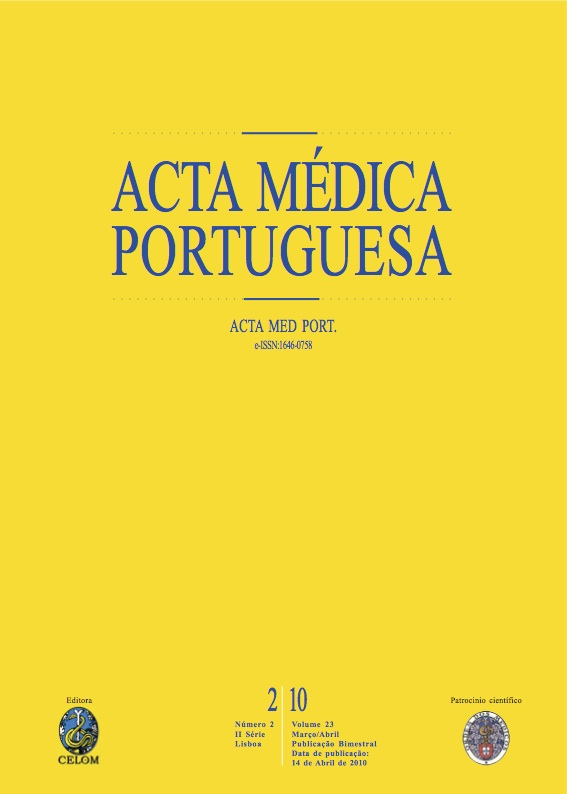Alimentação entérica e impactação alimentar esofágica: que relação?
DOI:
https://doi.org/10.20344/amp.617Resumo
In the intensive care unit (ICU), enteral feeding is the method of choice for providing adequate nutrition in intubated patients. The oesophageal impactation (EI) by enteric nutrition (EN) results from solidification of the solution in esophagus lumen with formation of bezoar and although rare, is gradually becoming more common in clinical practice. In recent years some have been diagnosed cases of enteric nutrition impact, in an ICU. The authors seek to better understand their risk factors in order to prevent its occurrence.Retrospective study of patients with endoscopic diagnosis of EI, in ICU, over a period of 3 years.There were 1367 patients in the ICU, 1003 did EN and 9 had a EI diagnosis. Mean age - 66 years, 7 males, all of them with invasive ventilation support. Mean ICU stay - 32 days, and EI at 20th day, 12 days after started EN. In all the cases, EN is due to the solidification of the EN solution in esophagus. 7 patients had esophageal reflux risk factors: 4 previously known and 3 identified after EI diagnosis. The endoscopic treatment was successful in 7 patients.The EI frequency is low. The ICU average delay (32 days) in this series is twice the total of patients admitted during this period (14,27 days), reflecting the greater severity of the patients studied. Several cases could be implicated in the etiology of that clinical entity. Whenever risk factors are present it should be considered both the endoscopic introduction of nasojejunal tube and specific positioning strategies, to prevent reflux and gastric estasis. Medical and endoscopic treatment solved the majority of related cases that are available in the literature; however, in some specific cases it was necessary to use surgical treatment.Downloads
Downloads
Como Citar
Edição
Secção
Licença
Todos os artigos publicados na AMP são de acesso aberto e cumprem os requisitos das agências de financiamento ou instituições académicas. Relativamente à utilização por terceiros a AMP rege-se pelos termos da licença Creative Commons ‘Atribuição – Uso Não-Comercial – (CC-BY-NC)’.
É da responsabilidade do autor obter permissão para reproduzir figuras, tabelas, etc., de outras publicações. Após a aceitação de um artigo, os autores serão convidados a preencher uma “Declaração de Responsabilidade Autoral e Partilha de Direitos de Autor “(http://www.actamedicaportuguesa.com/info/AMP-NormasPublicacao.pdf) e a “Declaração de Potenciais Conflitos de Interesse” (http://www.icmje.org/conflicts-of-interest) do ICMJE. Será enviado um e-mail ao autor correspondente, confirmando a receção do manuscrito.
Após a publicação, os autores ficam autorizados a disponibilizar os seus artigos em repositórios das suas instituições de origem, desde que mencionem sempre onde foram publicados e de acordo com a licença Creative Commons









